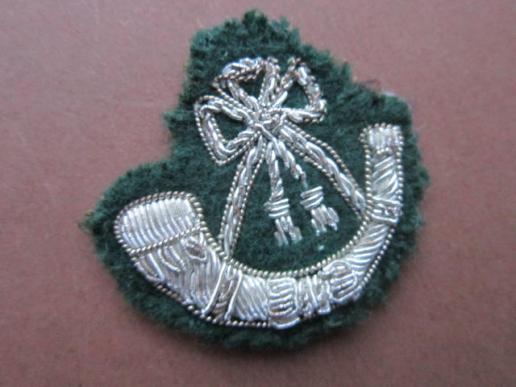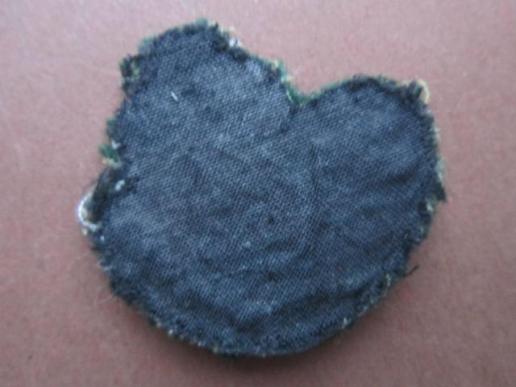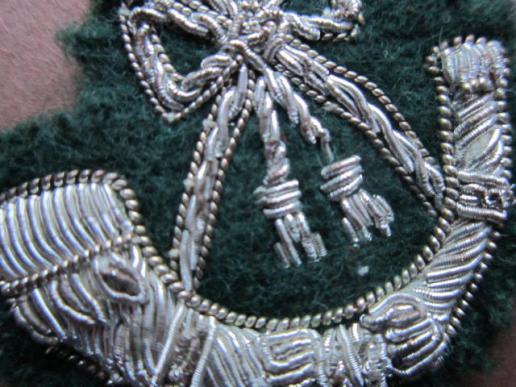A never seen before nicely bullion made officers quality Oxfordshire and Buckinghamshire Light Infantry beret badge
This is a perfect example of a never seen before nicely bullion made officers quality Oxfordshire and Buckinghamshire Light Infantry beret badge. The badge is executed in a fine silver bullion thread on a rifle green backing. The Oxfordshire and Buckinghamshire Light Infantry was a light infantry regiment of the British Army that existed from 1881 until 1958, serving in the Second Boer War, World War I and World War II. The 2nd Battalion, Oxford and Bucks Light Infantry returned to England in July 1940, after having served in British India and Burma for the last eighteen years. The battalion, under the command of Lieutenant Colonel L.W. Giles, became part of the 31st Independent Brigade Group, serving alongside 1st Battalion, Border Regiment, 2nd Battalion, South Staffordshire Regiment and 1st Battalion, Royal Ulster Rifles, all Regular Army battalions, the latter two having also served in British India before the war. In October 1941 the battalion, together with the rest of the 31st Brigade, was re-roled as an airborne, specifically as glider infantry, and the 31st Brigade was redesignated the 1st Airlanding Brigade and became part of the 1st Airborne Division. In mid-1943 it was transferred, along with the 1st Royal Ulster Rifles, to become part of the 6th Airlanding Brigade in 6th Airborne Division. The 2nd Ox and Bucks were due to take part in the invasion of Sicily (Operation Husky); however in April 1943 the battalion was advised that the 1st Airborne and not the 6th Airborne were to be deployed in the landings. As part of Operation Deadstick just before the landings on D-Day on 6 June 1944, D Company commanded by Major John Howard as well as 30 Royal Engineers and men of the Glider Pilot Regiment (a total of 181 men), were to land in six Horsa gliders to capture the vital structure which became known as Pegasus Bridge over the Caen Canal and the bridge over the Orne River which became known as Horsa Bridge and was east of Pegasus. Their capture was intended to secure the eastern flank to prevent German armour from reaching the British 3rd Infantry Division that was due to commence landing on Sword Beach at 07:25hrs. This example is in perfect nicely issued condition.
Code: 51153



